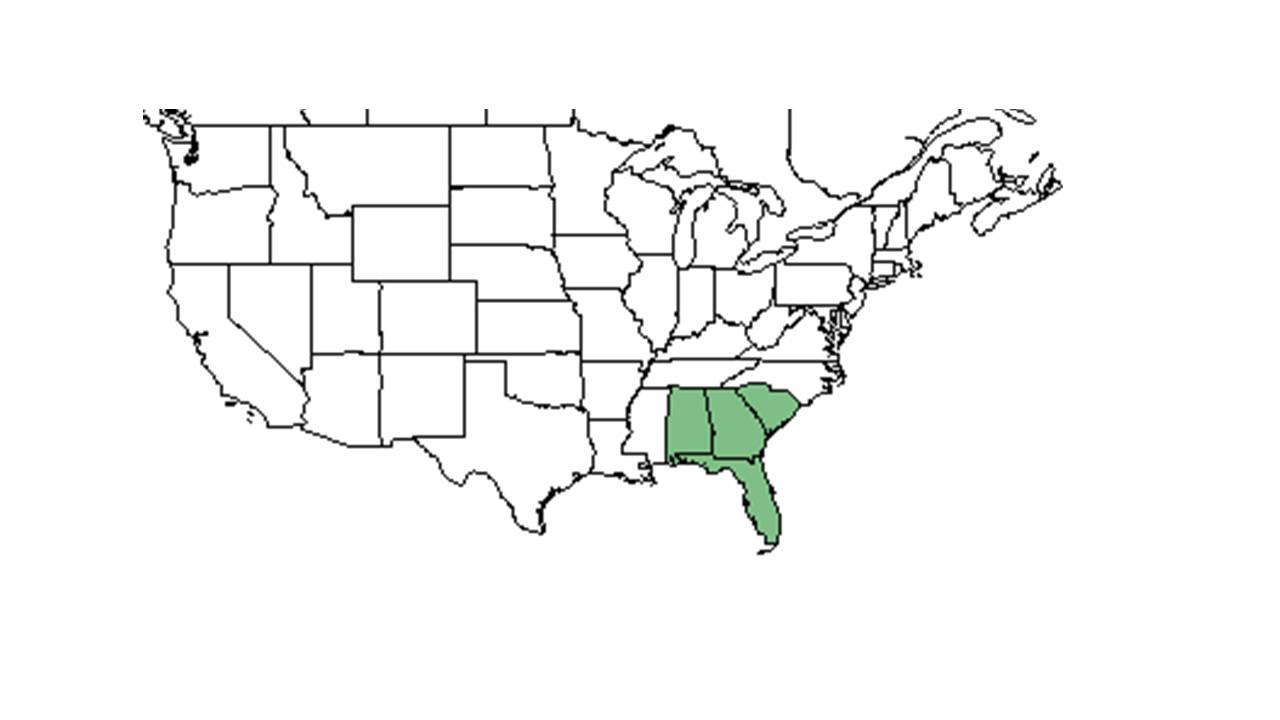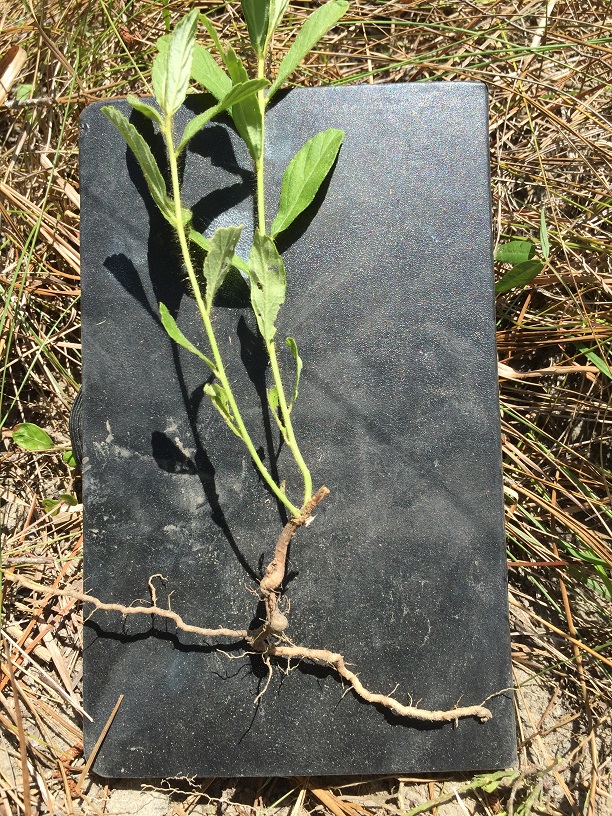Piriqueta cistoides
| Piriqueta cistoides | |
|---|---|

| |
| Photo taken by Michelle M. Smith | |
| Scientific classification | |
| Kingdom: | Plantae |
| Division: | Magnoliophyta - Flowering plants |
| Class: | Magnoliopsida – Dicotyledons |
| Order: | Violales |
| Family: | Passifloraceae |
| Genus: | Piriqueta |
| Species: | P. cistoides |
| Binomial name | |
| Piriqueta cistoides (L.) Griseb. | |

| |
| Natural range of Piriqueta cistoides from USDA NRCS Plants Database. | |
Common name: Pitted stripeseed
Contents
Taxonomic notes
Synonyms: none.[1]
Varieties: none.[1]
Description
"Perennial herb, 1.5-5 dm tall, forming colonies by root sprouts, stem pubescence densely stellate, admixed with long, spreading trichomes. Leaves alternate, oblong to lanceolate, 2.5-5 cm long, 0.5 -1.7 cm wide, finely stellate pubescent on both surfaces with long trichomes on the midrib below, obtuse, rarely acute, base rounded to attenuate, sessile or petioles to 2 mm long. Inflorescence a terminal bracteate raceme; pedicels equaling or shorter than the peduncles. Calyx 5 parted, 5-8 mm long; petals 5, brilliant orange-yellow, 1.5-2 cm long; stamens 5, shorter than the petals; pistil 3- parted, stigmas brush-like capsule 3-valved, 1-celled, globose, 5-7 mm long. Seeds tan or blackish gray, obovate, 1.8-2 mm long, ribbed, arillate."[2]
Distribution
P. cistoides was reported for Georgia, but the documentation is untraceable. A better confirmation is pending.[1]
Ecology
Habitat
Natural habitats include open upland pine woodland; well drained longleaf pineland; scattered on slopes and ridges in a longleaf pine forest; recently burned sandhill; and longleaf, wiregrass habitat.[3] It has also been documented to occur along powerline corridors. It has been observed to grow in drying loamy sand.[3] Associated species include longleaf pine and wiregrass.[3]
Phenology
P. cistoides has been observed to bloom in August.[3] Kevin Robertson has observed this species flower within three months of burning. KMR
Seed dispersal
This species is thought to be dispersed by ants and/or explosive dehiscence.[4]
Pollination
The following Hymenoptera families and species were observed visiting flowers of Piriqueta cistoides subsp. caroliniana at Archbold Biological Station:[5]
Halictidae: Augochlorella aurata, Augochloropsis metallica, Lasioglossum nymphalis
Use by animals
Agraulis vanillae use P. cistoides. subsp. caroliniana as a host plant. Native bees feed from the flowers and ants feed off the elaiosome from the P. cistoides. subsp. caroliniana.[6]
Conservation and management
Cultivation and restoration
Photo Gallery
References and notes
- ↑ 1.0 1.1 1.2 Weakley, A.S. 2015. Flora of the southern and mid-atlantic states. Working Draft of 21 May 2015. University of North Carolina at Chapel Hill, Chapel Hill, North Carolina.
- ↑ Radford, Albert E., Harry E. Ahles, and C. Ritchie Bell. Manual of the Vascular Flora of the Carolinas. 1964, 1968. The University of North Carolina Press. 709. Print.
- ↑ 3.0 3.1 3.2 3.3 Florida State University Robert K. Godfrey Herbarium database. URL: http://herbarium.bio.fsu.edu. Last accessed: July 2015. Collectors: Loran C. Anderson, R. A. Norris, Kevin Oakes, Robert K. Godfrey, R. Komarek, Cecil R Slaughter. States and Counties: Florida: Duval, Gadsden, Leon, Wakulla. Georgia: Grady, Thomas. Compiled by Tall Timbers Research Station and Land Conservancy.
- ↑ Kirkman, L. Katherine. Unpublished database of seed dispersal mode of plants found in Coastal Plain longleaf pine-grasslands of the Jones Ecological Research Center, Georgia.
- ↑ Deyrup, M.A. and N.D. 2015. Database of observations of Hymenoptera visitations to flowers of plants on Archbold Biological Station, Florida, USA.
- ↑ Osorio R. 2008The Wildflower Garden Number 5 in the Series-Piriqueta cistoides. subsp. caroliniana Palmetto 25(1):8-9
